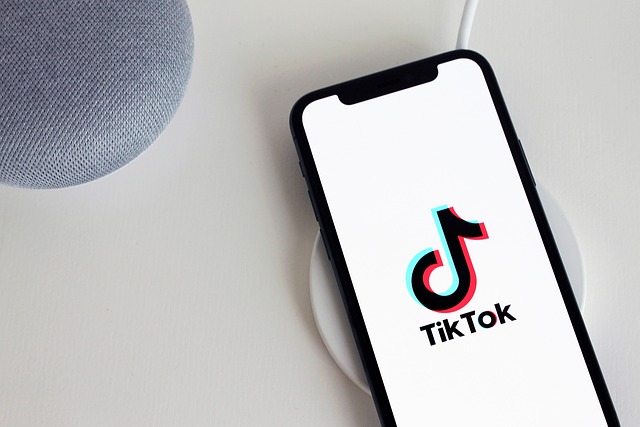Discover the power of SEO in driving organic traffic to your website in today’s digital age. Dive into the intricate world of crafting effective SEO titles and meta descriptions. Learn how to optimize these critical elements for better search engine visibility and engage users when they encounter your search results.
Importance of SEO Titles: Unlocking Clicks and Traffic
Capture the attention of search engine users with compelling SEO titles. Explore how these clickable links in search engine results pages (SERPs) can make a substantial impact on organic traffic, click-through rates (CTR), and overall search engine visibility.
In today’s digital landscape, capturing the attention of search engine users is crucial for driving organic traffic to your website. One of the most powerful tools at your disposal is the SEO title. These compelling titles, displayed as clickable links in search engine results pages (SERPs), have the potential to make a substantial impact on your website’s visibility and click-through rates (CTR).
- Capture the attention: In today’s digital landscape, capturing the attention of search engine users is crucial for driving organic traffic to your website. One of the most powerful tools at your disposal is the SEO title. These compelling titles, displayed as clickable links in search engine results pages (SERPs), have the potential to make a substantial impact on your website’s visibility and click-through rates (CTR).
- A glimpse into the content: When users search for information on search engines, the first thing they encounter is the SEO title. It serves as a glimpse into the content that awaits them. A well-crafted SEO title can entice users to click on your website, increasing the chances of driving organic traffic and boosting your CTR.
- Optimized SEO titles: By optimizing your SEO titles, you have the opportunity to enhance your website’s visibility in SERPs. When users see a relevant and intriguing title, they are more likely to click on your link instead of others. This increased visibility not only drives more traffic to your website but also improves your overall search engine rankings.
- Crafting compelling titles: Crafting compelling SEO titles requires careful consideration. They should be concise, capturing the essence of your content in a limited number of characters. It’s important to include relevant keywords that align with the user’s search intent. By incorporating these keywords, you increase the chances of your website appearing as a relevant result.
- Instigate the curiosity: Additionally, an effective SEO title should instigate the user’s curiosity or offer a clear benefit. By providing a compelling reason to click on your link, you can further enhance user engagement and drive more traffic to your website.
In summary, SEO titles play a pivotal role in unlocking clicks and traffic to your website. By creating compelling and optimized titles, you can attract more users, improve your CTR, and boost your overall search engine visibility. Harness the power of SEO titles to maximize your online presence and drive organic traffic to your website.
Elements of an Effective SEO Title: Crafting Irresistible Hooks
Craft SEO titles that leave a lasting impression. Discover the key elements, such as concise messaging (under 70 characters), relevant keywords, and power words, that entice users to click on your link. Unlock the potential of evoking curiosity and providing clear benefits to engage readers further.
Crafting an effective SEO title is an art that can make the difference between a user clicking on your link or scrolling past it. To create titles that leave a lasting impression and entice users to click, it’s important to consider key elements that make them irresistible.
- Concise Messaging (Under 70 Characters): Keep your SEO title concise and to the point. Limit it to under 70 characters to ensure that it is fully displayed on search engine results pages (SERPs). A concise title captures attention quickly and allows users to understand what your content is about at a glance.
- Relevant Keywords: Incorporate relevant keywords that align with the user’s search intent. Research and identify the keywords that your target audience is likely to use when searching for content similar to yours. By including these keywords in your SEO title, you increase the chances of your link appearing as a relevant result.
- Power Words: Power words are attention-grabbing terms that evoke emotion and interest. Words such as “ultimate,” “essential,” “complete,” or “exclusive” can create a sense of urgency and make your title stand out. These power words capture the user’s attention and compel them to click on your link to discover more.
- Curiosity and Clear Benefits: Craft SEO titles that evoke curiosity or provide clear benefits to the user. A title that sparks curiosity leaves users wanting to know more and prompts them to click on your link for further information. Similarly, a title that clearly conveys the benefits of your content entices users by highlighting what they stand to gain by clicking.
By leveraging these elements in your SEO titles, you can create hooks that are irresistible to users. Grab their attention with concise messaging, incorporate relevant keywords, and use power words to create a sense of urgency. Evoking curiosity and providing clear benefits further engage readers and encourage them to click on your link.
Remember, your SEO title is the first impression users have of your content. Craft it carefully to make it compelling and impactful. By mastering the art of crafting irresistible hooks, you can increase click-through rates, drive more traffic to your website, and boost your overall search engine visibility.
Best Practices for Writing SEO Titles: Optimizing for Maximum Impact
Unleash the power of best practices in crafting SEO titles that stand out. Delve into the importance of thorough keyword research, the natural incorporation of keywords, and the use of action-oriented language, numbers, and adjectives. Elevate your titles to captivate users and boost engagement.
When it comes to crafting SEO titles, following best practices can significantly enhance their impact and effectiveness. By implementing these proven strategies, you can create titles that stand out, captivate users, and boost engagement. Here are some key best practices to consider:
- Thorough Keyword Research: Conduct thorough keyword research to identify the most relevant and high-impact keywords for your content. Understand the search terms and phrases your target audience is using when seeking information related to your content. By incorporating these keywords naturally into your SEO title, you increase the chances of your link appearing in relevant search results.
- Natural Incorporation of Keywords: While it’s essential to include relevant keywords in your SEO title, it’s equally important to ensure their natural integration. Avoid keyword stuffing or using them in a way that disrupts the flow and readability of the title. A seamlessly integrated keyword ensures that your title remains engaging and resonates with both search engines and users.
- Action-Oriented Language, Numbers, and Adjectives: Infuse your SEO titles with action-oriented language, numbers, and adjectives to make them more captivating and enticing. Action words like “discover,” “unleash,” or “transform” create a sense of excitement and urgency. Including specific numbers or adjectives like “top,” “essential,” or “ultimate” adds credibility and sparks curiosity. These elements grab the user’s attention and make your title more compelling.
- Readability and Clarity: Keep your SEO titles clear, concise, and easy to understand. Avoid using jargon or complex terminology that might confuse or alienate your audience. A clear and readable title ensures that users quickly grasp the main message of your content, making them more likely to click on your link.
- A/B Testing and Iteration: Don’t be afraid to experiment and fine-tune your SEO titles through A/B testing. Test different variations of titles to see which ones generate better click-through rates and user engagement. Analyze the results and iterate based on the insights gained, continuously optimizing your titles for maximum impact.
By implementing these best practices, you can optimize your SEO titles for maximum impact. Thorough keyword research, natural incorporation of keywords, action-oriented language, and readability are all crucial factors. Elevate your titles to captivate users, improve click-through rates, and ultimately boost engagement with your content.
A/B Testing and Iteration: Unleashing the Power of Experimentation
Fine-tune your SEO titles through experimentation. Discover the benefits of testing different variations and uncovering titles that generate higher click-through rates and user engagement.
In the realm of SEO, A/B testing stands as a valuable tool for fine-tuning your SEO titles. Don’t shy away from experimentation. Instead, embrace the opportunity to test different variations of titles and uncover the ones that generate better click-through rates and user engagement. Through this iterative process, you can gather valuable insights and make data-driven decisions to optimize your titles for maximum impact.
- Creating variations: A/B testing involves creating two or more variations of your SEO titles and presenting them to different segments of your audience. By comparing the performance of these variations, you can determine which titles resonate best with your target audience and drive higher levels of engagement. This method allows you to measure the effectiveness of different elements such as wording, structure, and call-to-action phrases.
- Select a specific metric to track: To conduct an A/B test, select a specific metric to track, such as click-through rates or time spent on a page, and define a clear hypothesis. Create two or more versions of your SEO title, making deliberate changes to test specific variables. It could be altering the wording, rearranging the keywords, or experimenting with different power words.
- Implement the variations: Implement the variations across different pages or segments, ensuring that the test groups are randomly assigned. Monitor the performance of each variation and collect data on the chosen metric. This data will provide insights into which titles are resonating better with your audience.
- Analyze the results: After gathering sufficient data, analyze the results and draw meaningful conclusions. Identify the winning variation that performed better in terms of the desired metric. This could be the title that garnered higher click-through rates, increased user engagement, or achieved the desired action on your website.
- Refine your titles: It’s essential to iterate and continually refine your SEO titles based on the insights gained from A/B testing. Implement the winning variation as the default title and use the knowledge gained to create new experiments. Keep testing and experimenting, refining your titles to drive even better results.
- An ongoing process: Remember, A/B testing is an ongoing process. As user preferences and search engine algorithms evolve, so should your titles. Stay vigilant, be open to experimentation, and let the data guide your decision-making. With each iteration, you’ll unlock the potential to optimize your SEO titles and capture the attention of your target audience more effectively.
Significance of Meta Descriptions: A Glimpse into Engaging Content
Discover how meta descriptions serve as concise summaries that generate interest and encourage clicks. Explore their role in influencing click-through rates and providing users with a compelling overview of your webpage’s content.
Meta descriptions play a significant role in providing users with a concise summary of the content found on a webpage. Although they do not directly impact search engine rankings, they hold immense importance in influencing click-through rates (CTR) and enticing users to click on a specific search result.
- Concise Summaries: Meta descriptions offer a glimpse into the content of a webpage, presenting users with a brief overview. They provide a concise summary that helps users determine whether the page aligns with their search intent. Crafting an informative and enticing meta description can provoke the users and increase their likelihood of clicking on your link.
- Influencing Click-Through Rates: A well-written meta description has the power to influence click-through rates. When users scan search engine results pages (SERPs), they often rely on the meta description to evaluate the relevance and value of a webpage. A compelling meta description that effectively summarizes the content and generates interest can draw users to click on your specific search result, driving traffic to your webpage.
- Establishing Relevancy: Meta descriptions help establish relevancy between the user’s search query and the content of your webpage. By incorporating relevant keywords naturally into your meta description, you signal to search engines and users that your page addresses their specific needs or interests. This alignment of keywords helps improve the visibility of your webpage in SERPs and increases the chances of it appearing as a relevant result.
- Creating a Sense of Urgency or Curiosity: A well-crafted meta description can create a sense of urgency or curiosity, compelling users to click on your link. By highlighting unique value propositions, benefits, or compelling aspects of your content, you spark interest and motivate users to explore further. This sense of urgency or curiosity can drive higher click-through rates and increased user engagement.
In conclusion, meta descriptions are valuable tools for providing users with a glimpse into engaging content. They influence click-through rates by presenting concise summaries and establishing relevancy. By crafting compelling meta descriptions that generate interest, you can entice users to click on your link and explore the valuable content on your webpage.
Crafting Compelling Meta Descriptions: Attracting Users to Click
Master the art of crafting meta descriptions that leave users craving for more. Keep them concise (under 160 characters) to avoid truncation in SERPs. Unleash the power of relevant keywords and highlight the unique value and benefits your content offers. Ignite curiosity and urgency to drive clicks and engagement.
Crafting compelling meta descriptions is an art that can attract users to click on your search result and explore your content further. By following these best practices, you can create meta descriptions that leave users craving for more:
- Conciseness is Key: Keep your meta descriptions concise, ideally under 160 characters, to avoid squeezing in search engine results pages (SERPs). A concise meta description ensures that the entire message is displayed, providing users with a clear and compelling overview of your content.
- Relevant Keywords for Connection: Incorporate relevant keywords into your meta description to establish a connection between the user’s search query and your content. Including keywords that align with the user’s intent increases the chances of your webpage appearing as a relevant and valuable result.
- Highlight Unique Value and Benefits: Showcase the unique value and benefits of your content within the limited space of the meta description. Whether it’s actionable insights, comprehensive guides, or expert advice, emphasize what sets your content apart and why users should click on your link.
- Ignite Curiosity and Urgency: Use language that ignites curiosity and urgency in users. Pose questions, offer solutions, or create a sense of intrigue to attract users to click and explore further. By tapping into their curiosity, you increase the likelihood of capturing their attention and engagement.
Conclusion: Unlocking the Potential of SEO Titles and Meta Descriptions
Upon reviewing the article, you can notice that each section is introduced with an SEO heading and meta description. The headings provide a concise and descriptive title for each section, while the meta descriptions briefly summarize the content of each section, enticing readers to continue reading. This approach helps optimize the article for search engines and provides a clear structure for readers to navigate through the information effectively.
In today’s digital landscape, optimizing SEO titles and meta descriptions is vital for attracting organic traffic and improving click-through rates (CTR). These elements serve as the first impressions for users on search engine results pages (SERPs) and play a crucial role in influencing their decision to click on a particular website. By understanding the significance of SEO titles and meta descriptions and implementing best practices, you can unlock their full potential and enhance your search engine visibility and user engagement.
Throughout this article, we have explored the importance of SEO titles as clickable links that make a substantial impact on organic traffic, CTR, and overall search engine visibility. We have delved into the elements of an effective SEO title, such as concise messaging, relevant keywords, and the use of powerful words, that can capture the attention of users and entice them to click on your link.
Additionally, we have discussed the best practices for writing SEO titles, including conducting thorough keyword research, incorporating keywords naturally, and using action-oriented language, numbers, and adjectives. These practices can elevate your SEO titles, making them more captivating and engaging for users.
We have also shed light on the significance of meta descriptions as concise summaries that provide users with a glimpse into your webpage’s content. Although they do not directly impact search engine rankings, well-crafted meta descriptions significantly influence CTR by effectively summarizing the content and generating interest. By keeping them concise, incorporating relevant keywords, and highlighting your content’s unique value and benefits, you can create meta descriptions that entice users to click and explore further.
To maximize the impact of your SEO titles and meta descriptions, it is crucial to implement these strategies consistently across your website’s pages. By optimizing these critical elements, you can improve your search engine visibility, attract more organic traffic, and increase user engagement from the very first interaction.
In conclusion, by embracing the importance of SEO titles and meta descriptions and following the best practices shared in this article, you have the power to unlock their potential and achieve better results in terms of search engine visibility and user engagement.
FAQs: Your Burning Questions Answered
Q. What is the ideal length for an SEO title?
A. The ideal length for an SEO title is under 70 characters to avoid squeeziness in SERPs. Keeping the title concise ensures that the entire message is displayed, increasing the chances of user engagement.
Q. How often should keywords be included in meta descriptions?
A. Keywords should be naturally incorporated into meta descriptions, ensuring they align with the content and search queries. However, it is essential to avoid excessive keyword stuffing, as it can negatively impact the readability and effectiveness of the meta description.
Q. Can SEO titles and meta descriptions be changed after publishing?
A. Yes, SEO titles and meta descriptions can be changed after publishing. Content management systems (CMS) and website platforms often provide the flexibility to update these elements for improved optimization and user engagement.
Q. Do SEO titles and meta descriptions impact search engine rankings directly?
A. SEO titles and meta descriptions do not have a direct impact on search engine rankings. However, they play a crucial role in attracting organic traffic and influencing click-through rates, which indirectly contribute to improved search engine visibility.
Q. Should meta descriptions be unique for every webpage?
Yes, it is recommended to create unique meta descriptions for every webpage. Unique meta descriptions help search engines understand the content of each page and provide users with relevant information that encourages them to click and explore further.
*Blogger vs. WordPress: Choosing the Best Platform for Your Blog or Website










One Comment